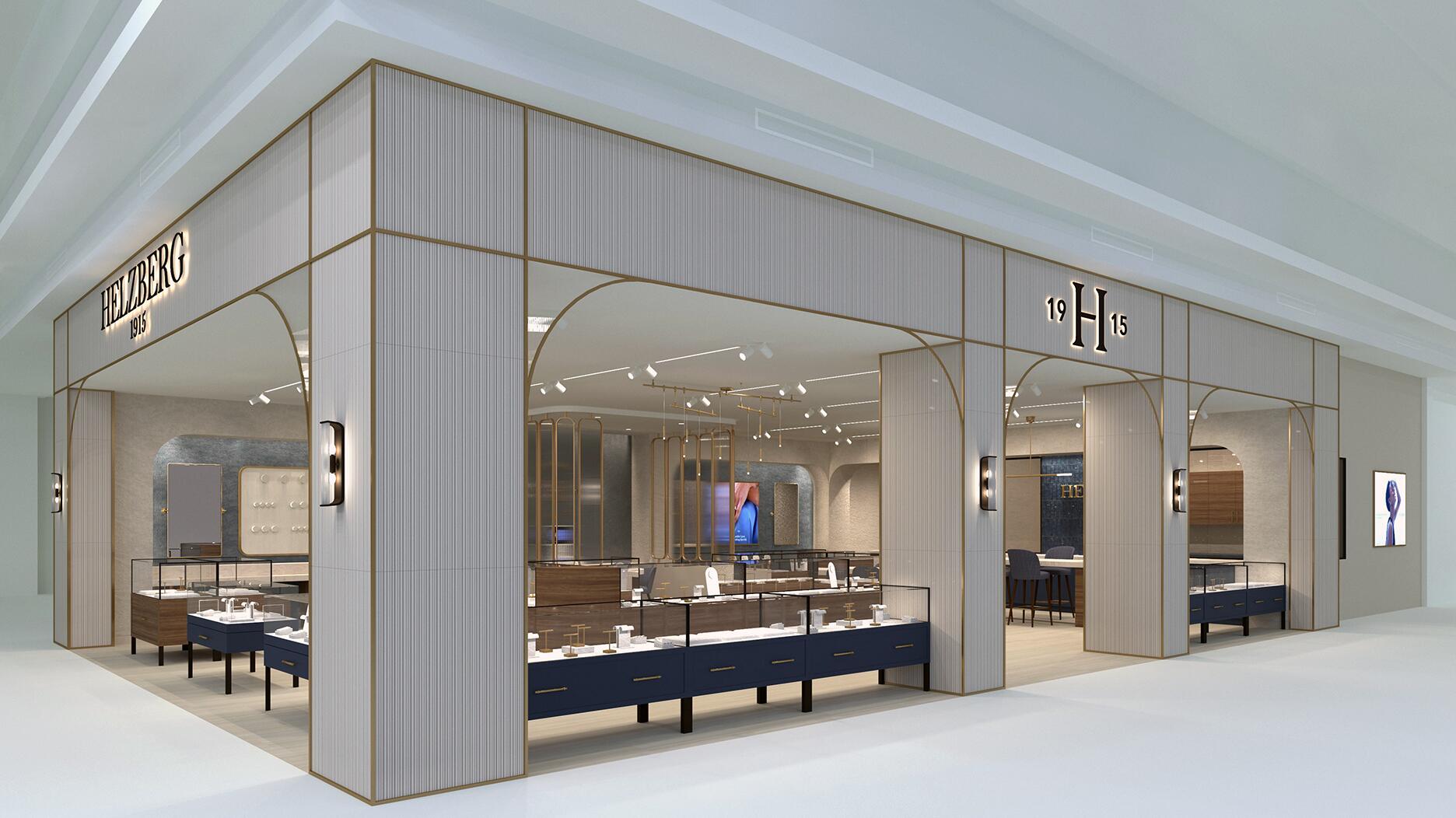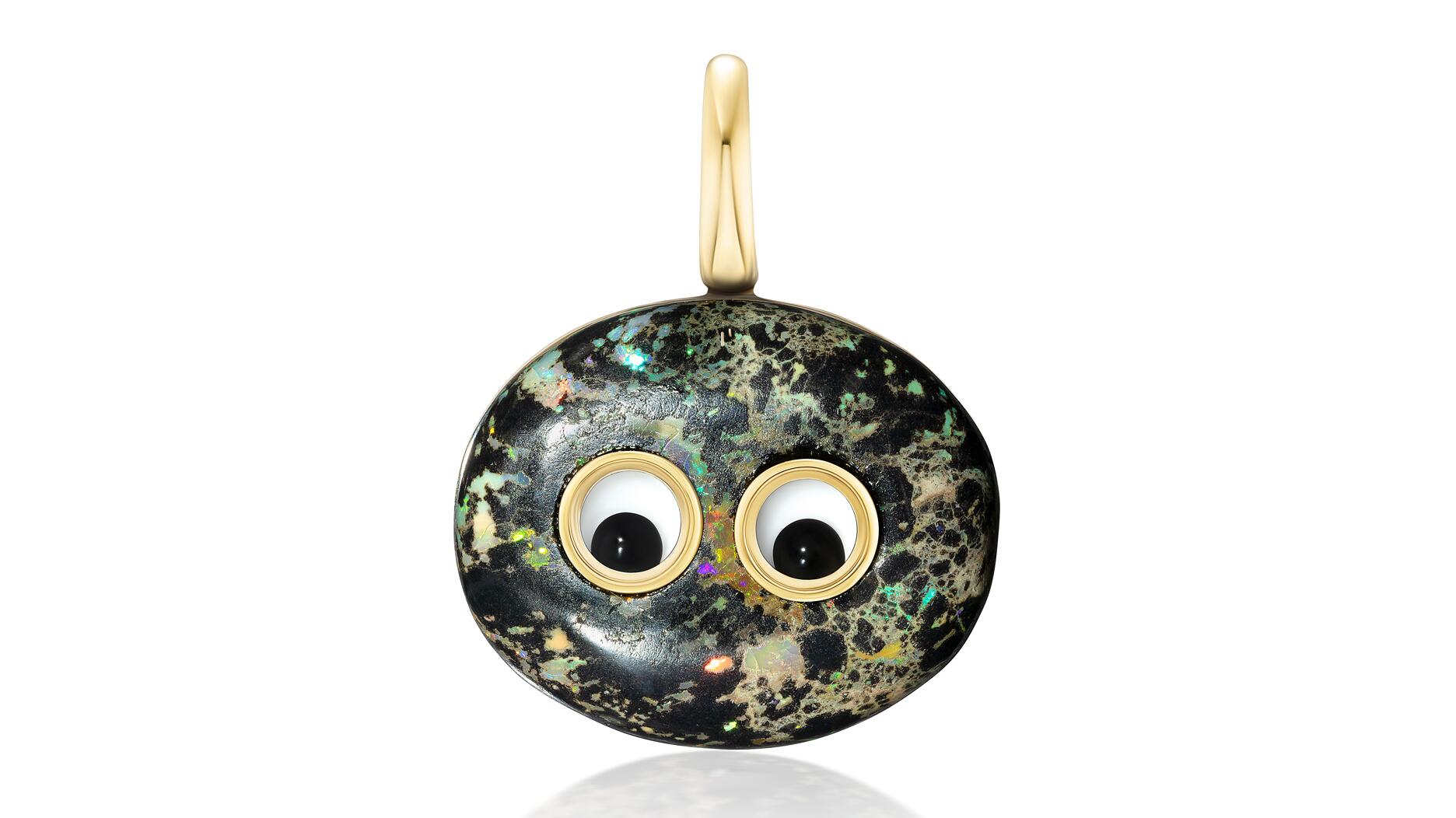In the recent multi-shipment seizure, CBP also found counterfeit Audemars Piguet, Moncler, and Chrome Hearts items.
Forget the 4 C’s. Meet the 3 S’s.
A Silicon Valley startup wants to shake up the way consumers think about diamonds, and it’s got nothing to do with lab-grown stones.

How many times has the average engagement ring owner looked at their diamond through a jeweler’s loupe?
Personally, I haven’t once, and a new Silicon Valley-based startup is banking on the idea that most brides won’t.
“It allows the light that would normally leave the bottom of the diamond to be sent back up through the table,” explained Sparkle Cut CEO Jo Lawson when I met with her in January.
The result is a diamond that sparkles more than one would imagine based on its lab report.
“We think the 4 C’s are valuable because it’s a baseline. But … that baseline needs a jeweler’s loupe.” – Jo Lawson, Sparkle Cut CEO
The nano-cuts, which are approximately 1/50 the size of a human hair, are invisible not only to the human eye but also under 30x magnification. They don’t affect a stone’s carat weight, nor any of its graded characteristics.
I had the chance to see about a dozen Sparkle Cut stones in person—all J and K color, 1- and 1.5-carat round brilliant diamonds set in finished engagement rings— and they do appear to be much brighter and lighter, more consistent with the G-I color range.
“Our claim to fame is that we can take any diamond, no matter what the 4 C’s are, and make them look more spectacular,” said Lawson.
“We’ve found that brides care about size and sparkle. To keep the cost reasonable for a really highly graded, sparkly diamond means you typically have to sacrifice size.”
To battle this conundrum, Sparkle Cut wants consumers to focus on a different set of diamond-grading criteria, its trademarked 3 S’s—size, shape, and sparkle.
Lawson elaborated: “We love tradition and we think the 4 C’s are really valuable because it’s a baseline. But what we want to teach people is that that baseline needs a jeweler’s loupe and what they need to trust is how they feel about the ring. Seeing is believing. When I show people these diamonds they’re so surprised at how much they sparkle, (regardless of their grade).”
Sparkle Cut officially launched in November, selling directly to consumers on SparkleCut.com.
The site currently sells loose diamonds, finished diamond engagement rings via its online ring builder and diamond stud earrings.
All the stones are round brilliants between about 0.5-1.5 carats and most are in the J-K range, which the company says is the sweet spot for leveraging the most improvement and increased value with the sparkle cut technology.
The average retail price for an item on the site is between $3,000 and $10,000 but sales so far have ranged between $750 and $35,000, as Sparkle Cut allows for special orders for larger diamonds and settings not available on the website; the company also will apply the sparkle cut technology on a diamond that a consumer already owns.
This emphasis on customer service is indicative of how the company is approaching online-only sales—they want to make the experience as personal and high-touch as possible. Every piece sold comes with a lifetime warranty and can be returned in the first 40 days after purchase, no questions asked.
As the technology—which is native to the biotech and semiconductor industries develops, Sparkle Cut will move into fancy shapes, which Lawson predicts will be “super disruptive,” since they traditionally aren’t able to match the sparkle of a round brilliant.
Sparkle Cut hand-selects its diamonds from dealers in India before applying the sparkle cut technology in Florida, where it's legally headquartered. All of its stones are graded by either GIA or IGI.
Lawson said that other companies have tried similar techniques in the past, but none worked like Sparkle Cut. “There are others that do similar things,” she explained. “They cut around the pavilion, but you can see the cuts with the naked eye.”
GemEx, the company that quantifies and measures a diamond’s light performance, gave several Sparkle Cut diamonds its highest possible score.
"We scientifically measure the amount of sparkle a diamond generates,” explained GemEx CEO Randall Wagner. “A number of Sparkle Cut’s diamonds have achieved our highest sparkle rating, and many of their other diamonds are not far behind.”
One of Sparkle Cut’s best endorsements, though, is Lawson herself.
She spent a decade at Apple running global teams across communications, customer experience, and retail. After founder Steve Jobs died she moved to Movado where she launched the company’s wearables division.
Sparkle Cut brought Lawson out of retirement because she recognized, just as she was trained to at Apple, that the technology benefits the end user in a non-traditional way; rather than training consumers how to pick the most “ideal” diamond according to industry standards, Sparkle Cut aims to deliver consumers the diamonds they want at better prices.
“I come in from the technology and luxury goods side of it, but I’ve never been in diamonds,” Lawson said. “My first question is always: Do customers care and how does this help a customer? Because if customers don’t care, I don’t have to spend time on it.”
It’s an attitude that relies on innovation, rather than following industry formulas, a value shared by the company’s co-founders who recruited Lawson: Pat Hopf—a venture capitalist and entrepreneur executive who specializes in early-stage companies disruptive to their industries, such as the Sleep Number bed—and Mark de Naray—Sleep Number bed’s former CEO who grew the business from less than a million in sales to more than $160 million.
“We don’t even know how to follow the formula,” Lawson told me. “The founders and original investors really believe in the product. We’re starting from solving a problem that exists, which is that everyone wants a more sparkly diamond. So we’re addressing something that’s really valuable to the customer, contextualizing it and letting them learn that what they value is what they should pay for.”
Though Sparkle Cut takes a non-traditional approach to assessing diamonds and amplifying their shine, the company is ultimately building upon the same emotional and cultural base that all fine jewelry relies upon—that a diamond’s formation deep in the earth over millions of year is miraculous and that jewelry is sentimental, meant to mark some of life’s big occasions and be passed down through families.
“What really excited me about Sparkle Cut was how we’re applying technology to a traditional, ethically mined diamond,” Lawson said. “Lab-grown diamonds are obviously highly technical but were using Sparkle Cut technology with naturally mined diamonds, just making them a little bit more beautiful.”
Lawson said that the company plans to host trunk shows and in-person Sparkle Cut events in the future. It’s also open to wholesale and white-label possibilities or letting industry members purchase the technology to give all of their diamonds the sparkle cut.
“One of the reasons I was compelled to join the company is because this has long legs. There are lots of directions this proprietary cut could go.”
The Latest

Jewelers of America execs and National Jeweler editors discuss tariffs, the sky-high gold price, and the engagement that broke the internet.

The luxury goods company said founder Ippolita Rostagno will remain at the brand’s helm.

How Jewelers of America’s 20 Under 40 are leading to ensure a brighter future for the jewelry industry.

Laura Burdese, who joined the Italian luxury brand in 2022, will take on the role in July.


Need a gift for the cat lover who has everything? Look no further than our latest Piece of the Week.

It purchased the “Grosse Pièce,” an ultra-complicated Audemars Piguet pocket watch from the ‘20s, for a record-breaking price at Sotheby’s.

Roseco’s 704-page catalog showcases new lab-grown diamonds, findings, tools & more—available in print or interactive digital editions.

The lab-grown diamond grower now offers custom engagement and fashion jewelry through its Kira Custom Lab Jewelry service.

Chandler got his start at Michelson Jewelers and has served as DCA president and CEO since 2001. He will retire at the end of the month.

The boutique is slated to open this week inside Terminal 8, offering pre-owned Rolex watches and more to international travelers.

Sponsored by Digital Monitoring Products

The special-edition egg pendant ingested in a New Zealand jewelry store was recovered after a six-day wait.

Associate Editor Natalie Francisco plays favorites with Piece of the Week, selecting a standout piece of jewelry from each month of 2025.

The “Love and Desire” campaign is inspired by the magic that follows when one’s heart leads the way, said the brand.

Two awardees will receive free tuition for an educational course at the Swiss lab, with flights and lodging included.

Berta de Pablos-Barbier will replace Alexander Lacik at the start of January, two months earlier than expected.

Sotheby’s held its first two jewelry sales at the Breuer building last week, and they totaled nearly $44 million.

Winners will receive free registration and lodging for its fourth annual event in Detroit.

Here are six ideas for making more engaging content for Instagram Reels and TikTok, courtesy of Duvall O’Steen and Jen Cullen Williams.

The honorees include a notable jewelry brand, an industry veteran, and an independent retailer.

Carlos Jose Hernandez and Joshua Zuazo were sentenced to life without the possibility of parole in the 2024 murder of Hussein “Sam” Murray.

Yood will serve alongside Eduard Stefanescu, the sustainability manager for C.Hafner, a precious metals refiner in Germany.

The New Orleans jeweler is also hosting pop-up jewelry boutiques in New York City and Dallas.

Set in a Tiffany & Co. necklace, it sold for $4.2 million, the highest price and price per carat paid for a Paraíba tourmaline at auction.

The jeweler’s “Deep Freeze” display showcases its iconic jewelry designs frozen in a vintage icebox.

Take luxury gifting to new heights this holiday season with the jeweler’s showstopping 12-carat sphene ring.


























